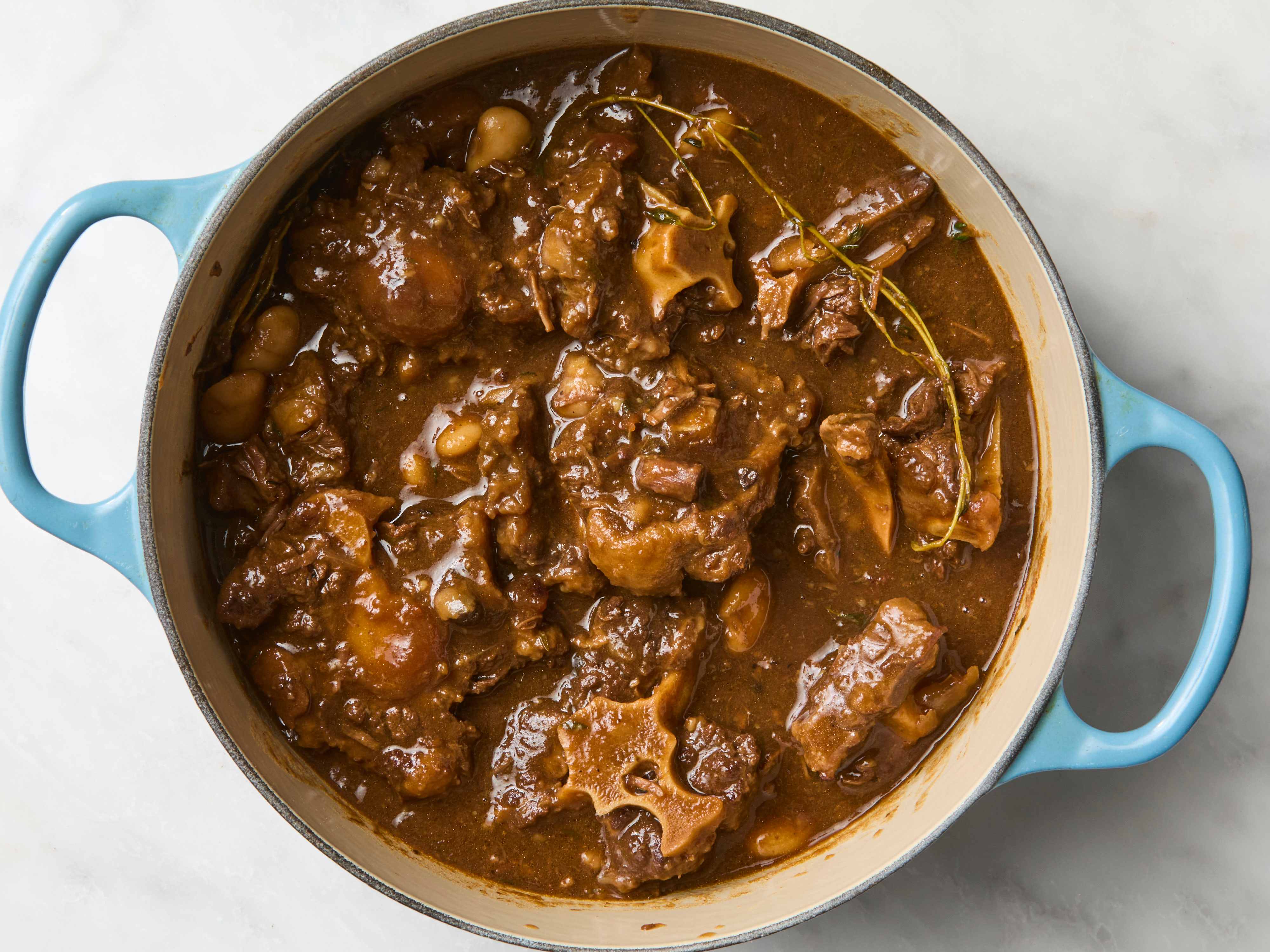0 Yorumlar
0 hisse senetleri
777 Views

Rehber
Elevate your Sngine platform to new levels with plugins from YubNub Digital Media!
-
Please log in to like, share and comment!
-
This 2025 MacBook Air with an M4 chip is on sale for $849 this weekendThis 2025 MacBook Air with an M4 chip is on sale for $849 this weekend SAVE $150: As of October 25, this 13-inch 2025 MacBook Air is $849, down from its list price of $999 on Amazon. Finding the right time to spring for a new computer can be all about waiting for the right device, with the right specs, and the right deal. This 2025 model...0 Yorumlar 0 hisse senetleri 771 Views
-
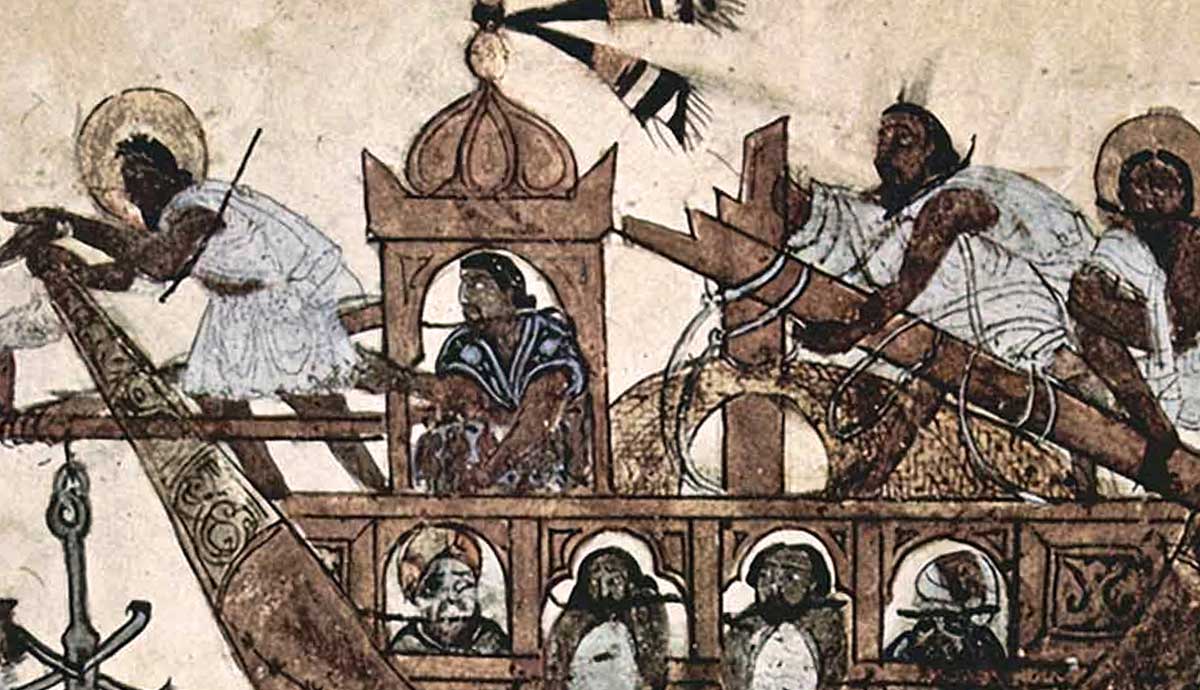 WWW.THECOLLECTOR.COMHow Arab Navigators Mapped the Indian Ocean Before EuropeArab navigators. Source: INF NewsAlthough the Islamic expansion knit the Indian Ocean together, a maritime base already existed. In ancient times, Roman merchants met traders hailing from far places. Evidence such as coins or amphorae (two-handled ceramic vessels) turned up in far-flung India. Ports with famous names, such as Aden, Hormuz, and Calicut, became trade hubs. Over time, Arab sailors created navigation methods, making connections easier.The Arab Maritime Golden AgeMap of the World by Ibn Hawqal, c. 980. Source: Muslim HeritageAs with most ancient sailing, their ships tended not to venture into blue water. The sailors hugged the coastline for short trips and knew key landmarks. Sailors rarely ventured far due to the limited tools or knowledge. Knowledge spread through oral traditions. Yet an ocean-wide network developed. Everything changed during the Arab Golden Age (7th and 15th centuries).One crucial change Arab navigators grasped was the seasonal monsoon winds. By mastering these winds, they could predictably departure times.Indian Ocean Muslim Trade Routes. Source: WikimediaWith blue water sailing now available and expanding trade, Arab mariners needed reliable tools. Their long tradition of oral knowledge now faced a rival: the map. Arab Caliphs encouraged a scholarly approach to cartography using astronomy and mathematics. Now, accurate measurements of currents, coastlines, and navigation produced uniform maps.With regular commerce, the ports previously mentioned thrived. Aden, located in the Red Sea, became a crucial hub for goods traveling from Africa, India, and the Mediterranean. Hormuz (in the Persian Gulf) linked Persian, Arab, and Indian markets. Finally, Calicut (India) saw Arab, Chinese, or Asian merchants carrying on. In the Indian Ocean, the Arabs entrenched themselves as intermediaries between Europe, Africa, and Asia.Their Tools and TechniquesA Navigator Using a Kamal for Positioning. Source: Oceans 4 FutureIn addition to tracking monsoon seasons and maps, Arab sailors refined their techniques and knowledge. Many of these improvements spilled over from the empirical methods employed during Islams Golden Age.For blue water navigation, Arab navigators used star charts, celestial navigation, memory, and tools like astrolabes and a clever, simple tool called a kamal. Made using knotted string and a rectangular board, the navigator calculated the latitude. This was by determining the angle between the skyline and a known star.Scholars consolidated Greek, Persian, and Indian maritime knowledge, incorporating their own observations and insights. The astronomer Al-Sufi recorded 250 plus stars in his Book of Fixed Stars. Formerly memorized details, such as harbors, wind patterns, and sailing directions, were recorded in texts (called rahmanis). All this knowledge finally appeared in the 15th centurys The Book of Useful Information on the Principles and Rules of the Sea by Ahmad ibn Majid.Distinctive and Useful Ship DesignsTraditional Dhow in the Persian Gulf. Source: Greenwich Maritime MuseumAs Arab scholars and sailors refined their trade, others developed hand, distinct, and later influential ship designs. They combined Arab innovations with Indian, Persian, and African practices. These later influenced the ship designs of the Portuguese and other European powers during the Age of Exploration.The Arabs refined earlier maritime technology, such as:Triangular lateen sails represented a significant technical leap. These allowed ships to tack against the wind, especially useful during monsoon seasons or for easier steering.Sewn planks: An age-old technique, shipbuilders literally sewed hull planks together. They drilled small holes along the edges. Next, the rope is threaded through the holes, and the planks are pulled tight, providing better flexibility for rough seas. Materials like resin or fiber made excellent caulking.Shipbuilders refined older vessel types, such as the dhow and sambuk, by adding lateen sails and improving their construction. The dhows final refinement came in the baglah (16th century).Recreated Baglah ship. Source: Family Tree DNAAt 100 feet in length, with a curved high prow and a square stern, the baglah stood out. Usually built with two or more lateen sails, bigger versions could transport up to 400 tons. Their size alone allowed the Arabs to dominate trading for centuries. Most Arab ships came from Yemen, Oman, or Gujarat.Beyond Physical CartographyExample of a sewn-plank hull. Source: Semantic ScholarArab navigators did more than physical mapping. The Arab maritime expansion occurred concurrently with Islams growth in the late 7th century. Caliphates encouraged trade for growth. Beyond their traditional areas, traders soon reached East Africa, India, and even Aceh (Indonesia). In many of these ports, Arab merchants established enclaves, mosques, and local contacts. Islam spread with them, providing a common threat throughout the region.A Common MisconceptionAs the Europeans entered the Indian Ocean, they found a pre-existing network. Their discovery is not entirely accurate.The Arab scholars and navigators had already woven the Indian Ocean together. They sailed into a cohesive system with working parts.0 Yorumlar 0 hisse senetleri 152 Views
WWW.THECOLLECTOR.COMHow Arab Navigators Mapped the Indian Ocean Before EuropeArab navigators. Source: INF NewsAlthough the Islamic expansion knit the Indian Ocean together, a maritime base already existed. In ancient times, Roman merchants met traders hailing from far places. Evidence such as coins or amphorae (two-handled ceramic vessels) turned up in far-flung India. Ports with famous names, such as Aden, Hormuz, and Calicut, became trade hubs. Over time, Arab sailors created navigation methods, making connections easier.The Arab Maritime Golden AgeMap of the World by Ibn Hawqal, c. 980. Source: Muslim HeritageAs with most ancient sailing, their ships tended not to venture into blue water. The sailors hugged the coastline for short trips and knew key landmarks. Sailors rarely ventured far due to the limited tools or knowledge. Knowledge spread through oral traditions. Yet an ocean-wide network developed. Everything changed during the Arab Golden Age (7th and 15th centuries).One crucial change Arab navigators grasped was the seasonal monsoon winds. By mastering these winds, they could predictably departure times.Indian Ocean Muslim Trade Routes. Source: WikimediaWith blue water sailing now available and expanding trade, Arab mariners needed reliable tools. Their long tradition of oral knowledge now faced a rival: the map. Arab Caliphs encouraged a scholarly approach to cartography using astronomy and mathematics. Now, accurate measurements of currents, coastlines, and navigation produced uniform maps.With regular commerce, the ports previously mentioned thrived. Aden, located in the Red Sea, became a crucial hub for goods traveling from Africa, India, and the Mediterranean. Hormuz (in the Persian Gulf) linked Persian, Arab, and Indian markets. Finally, Calicut (India) saw Arab, Chinese, or Asian merchants carrying on. In the Indian Ocean, the Arabs entrenched themselves as intermediaries between Europe, Africa, and Asia.Their Tools and TechniquesA Navigator Using a Kamal for Positioning. Source: Oceans 4 FutureIn addition to tracking monsoon seasons and maps, Arab sailors refined their techniques and knowledge. Many of these improvements spilled over from the empirical methods employed during Islams Golden Age.For blue water navigation, Arab navigators used star charts, celestial navigation, memory, and tools like astrolabes and a clever, simple tool called a kamal. Made using knotted string and a rectangular board, the navigator calculated the latitude. This was by determining the angle between the skyline and a known star.Scholars consolidated Greek, Persian, and Indian maritime knowledge, incorporating their own observations and insights. The astronomer Al-Sufi recorded 250 plus stars in his Book of Fixed Stars. Formerly memorized details, such as harbors, wind patterns, and sailing directions, were recorded in texts (called rahmanis). All this knowledge finally appeared in the 15th centurys The Book of Useful Information on the Principles and Rules of the Sea by Ahmad ibn Majid.Distinctive and Useful Ship DesignsTraditional Dhow in the Persian Gulf. Source: Greenwich Maritime MuseumAs Arab scholars and sailors refined their trade, others developed hand, distinct, and later influential ship designs. They combined Arab innovations with Indian, Persian, and African practices. These later influenced the ship designs of the Portuguese and other European powers during the Age of Exploration.The Arabs refined earlier maritime technology, such as:Triangular lateen sails represented a significant technical leap. These allowed ships to tack against the wind, especially useful during monsoon seasons or for easier steering.Sewn planks: An age-old technique, shipbuilders literally sewed hull planks together. They drilled small holes along the edges. Next, the rope is threaded through the holes, and the planks are pulled tight, providing better flexibility for rough seas. Materials like resin or fiber made excellent caulking.Shipbuilders refined older vessel types, such as the dhow and sambuk, by adding lateen sails and improving their construction. The dhows final refinement came in the baglah (16th century).Recreated Baglah ship. Source: Family Tree DNAAt 100 feet in length, with a curved high prow and a square stern, the baglah stood out. Usually built with two or more lateen sails, bigger versions could transport up to 400 tons. Their size alone allowed the Arabs to dominate trading for centuries. Most Arab ships came from Yemen, Oman, or Gujarat.Beyond Physical CartographyExample of a sewn-plank hull. Source: Semantic ScholarArab navigators did more than physical mapping. The Arab maritime expansion occurred concurrently with Islams growth in the late 7th century. Caliphates encouraged trade for growth. Beyond their traditional areas, traders soon reached East Africa, India, and even Aceh (Indonesia). In many of these ports, Arab merchants established enclaves, mosques, and local contacts. Islam spread with them, providing a common threat throughout the region.A Common MisconceptionAs the Europeans entered the Indian Ocean, they found a pre-existing network. Their discovery is not entirely accurate.The Arab scholars and navigators had already woven the Indian Ocean together. They sailed into a cohesive system with working parts.0 Yorumlar 0 hisse senetleri 152 Views -
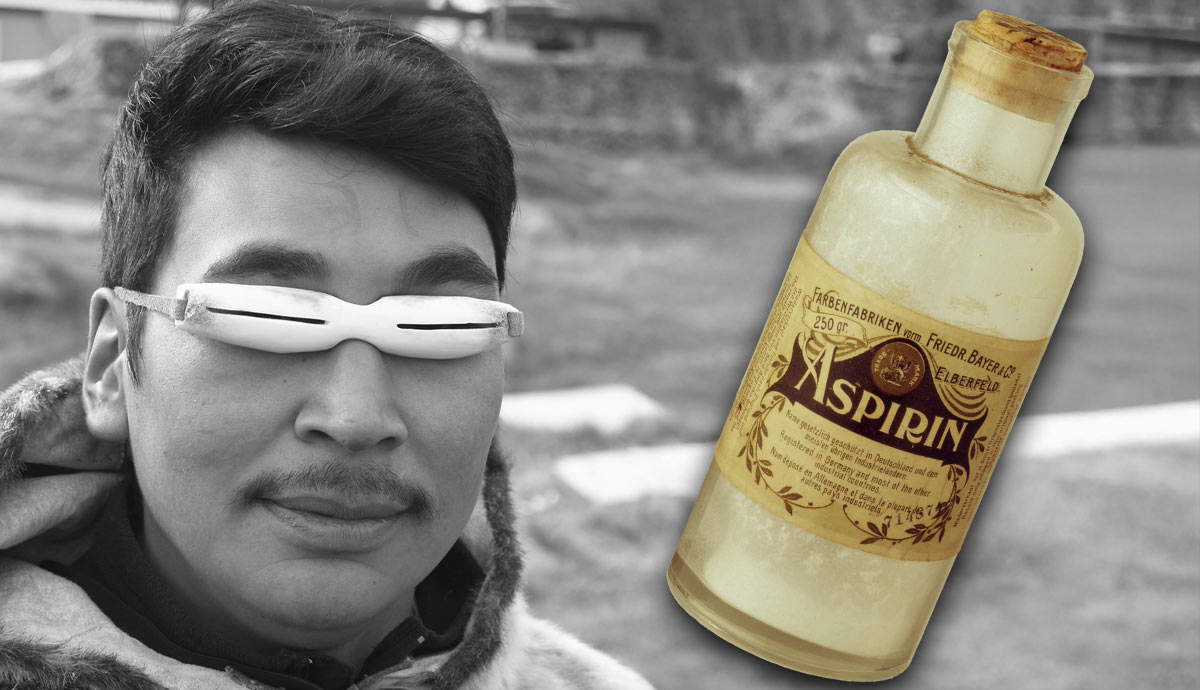 WWW.THECOLLECTOR.COM6 Indigenous Inventions That Are in Use TodayThe hundreds of Native American tribes distributed across what is now the United States were subjugated and forced to assimilate into white America. Many were discouraged from holding onto their traditions, but that didnt mean that all was lost. Efforts are still being made in the 21st century to preserve thousands of years of Indigenous culture. Not only have Indigenous men and women maintained their peoples history, theyve made valuable contributions to America and the world. Technological innovations of Americas first peoples not only made a difference in history but are still important today.Syringes Changed Modern MedicineSyringes with attached needles are used for giving accurate doses of medication and vaccinations. Source: Intropin/Wikimedia CommonsIn 19th century Scotland, a doctor named Alexander Wood was credited with creating the hypodermic syringe, a tool that is still essential in human and veterinary medicine globally. While Wood might get some credit, Americas Indigenous people came up with a precursor to the syringe before colonization began. A cleaned animal bladder was used to hold fluids, and a sharpened, hollow bird bone was attached to it. The sharpened bone, like a modern needle, was used to push through the skin and put medication into the body. These early medical tools were also used to clean wounds and ears and provided an efficient way to administer enemas.Vaccination with a needle and syringe is most common today, but it is not the only way to build immunity, as Indigenous tribes demonstrated. Source: Mississippi Department of Archives & History/Wikimedia CommonsMany Native American tribes exhibited an understanding of the concept of building immunity. Although immunization wasnt always done with syringes and needles as it often is today, there is evidence that Americas first people made efforts to immunize themselves. Documented instances of people ingesting small amounts of potentially dangerous substances to protect themselves from larger exposure have been uncovered.Kayaks Were Essential, Now RecreationalAn Inuit man demonstrates a traditional kayak in Greenland in 2006. Source: Ville Miettinen/Wikimedia CommonsToday, kayaking is a popular recreational sport. There are many different varieties of the small boats, which typically seat one person (although two-person models are available). They are used for relaxed paddling, whitewater adventures, family sightseeing, fishing, and hunting. The last two activities are what the inventors of the kayak, North Americas Inuit people, mainly used them for. Indigenous people also used kayaks as a form of travel.Generally, there were two main types of early kayaks, made either from driftwood or bone. The kayak frame was covered in animal skins and waterproofed using animal fat. Seal bladders were used to add buoyancy. These early boats were very light but fragile. As time went on, the boats construction was improved by the Inuit and also by their neighbors, the Aleut people. Eventually, larger, more stable boats were built, capable of transporting a whole family group. These umiaqs could be up to sixty feet long.Kayaking is now a popular endeavor worldwide. Source: Inkimar Err/Wikimedia CommonsThe word kayak translates to hunters boat, and though the Inuit and Aleut did some fishing for sustenance, kayaks were essential to hunting. The boats were easy to maneuver and capable of moving at a good clip. Their small size made them easy to control, even when utilizing a harpoon. Kayaks were quiet and didnt create splashes, enabling water hunters to sneak up on prey as if they were walking on land. Today, kayaks are generally made from fiberglass, though some Indigenous artisans have preserved the art of traditional small boat crafting.Baby Bottles Are a NecessityBaby bottles are used every day around the world. Source: Vyacheslav Argenberg, www.vascoplanet.com/Wikimedia CommonsThe Iroquois, or Haudenosaunee people, are credited with the invention of the baby bottle. A necessity still in use today, bottles are an essential alternative or supplement for many families. Variations of baby bottles are used for livestock, pets, and wildlife rehabilitation as well. The first baby bottles were made from cleaned, dried, and lubricated animal guts, often bear. Bird quill was used as an early nipple on these bottles. Since formula is a modern invention, the early Haudenosaunee created a blend of pounded nuts, meats, and water to provide infants with nutrition when their mothers milk was unavailable.This oil painting shows a baby with a rubber-tube feeding bottle. These bottles eventually earned a reputation as killers when bacterial overgrowth in the tube sickened the babies. Source: Paula Modersohn-Becker/Wikimedia CommonsAttempting to create bottles that were more ergonomic and easier to clean, manufacturers began to focus on commercially produced baby bottles beginning in the 16th century. A variety of materials were used, including wood, pewter, and glass. Wood and pewter bottles proved dangerous. Wood could not be thoroughly sanitized, as it would absorb milk. The hazard with pewter was that the milk eventually broke down the metal, leaching harmful elements into the babys meal and causing a high mortality rate.Glass bottles were introduced in the 1800s, though variations accompanied by a long rubber intake tube proved to be as deadly as pewter. Bacteria were able to grow in the tube from which the baby sucked, as they were difficult to clean. The French are credited with creating the modern version of the baby bottle, with polypropylene plastic introduced in the twentieth century. Today, bottles are still constantly evolving for efficiency, varying in nipple shapes, and utilizing new materials.Native Americans Pioneered Pain ReliefWillow bark was an instrumental ingredient in early pain relief. Source: Dimitrios Sawa/Wikimedia CommonsIts nothing in the modern world to simply reach for a bottle of pain relief tablets when a headache arises. Without the influence of pioneering Native American healers, that convenience may not be so close at hand. Willow bark was ingested under the guidance of healers from numerous tribes for use as an anti-inflammatory pain reliever. Willow bark contains a compound called salicin. When salicin is ingested, it creates salicylic acid. This acid inhibits the production of prostaglandin hormones, which contribute to pain and inflammation. A synthetic form of this naturally occurring compound was created in Germany in 1897. Salicylic acid is the main ingredient in modern aspirin, the most widely used medicine ever.An 1899 Bayer aspirin bottle. Source: Bayer AG/Wikimedia CommonsIndigenous people also created analgesic topical ointments from pain-relieving substances. Such substances included capsaicin, derived from peppers and jimsonweed. Capsaicin is still utilized today as an ingredient in topical pain relief products. These innovative ointments could be applied to cuts, bruises, and other wounds for direct pain relief.Snow Goggles Saved SightAn Inuit man wearing snow goggles fashioned from caribou antler. The strap is made from caribou sinew. Source: Julian Idrobo/Wikimedia CommonsProtecting ones eyes from the glaring effects of sun and snow is an important consideration in contemporary mountain sports, outdoor recreation activities, or simply spending time outside. A lack of eye protection in a snowy, bright environment risks a corneal sunburn from excessive ultraviolet (UV) light, leading to a condition known as snow blindness.Indigenous people from the Alaskan region, including the Inuit and Yupik, created innovations in eye protection thousands of years ago. Snow goggles were an invention that limited vision to just a small slit, reducing glare and protecting the eyes from UV damage. Goggles were created from a variety of materials, including bone, antler, or wood. A strap was tied around the head to keep the goggles in place.Modern snow goggles are commonplace for outdoor winter recreation worldwide. This little girl is skiing in Japan, wearing protective goggles. Source: Miki Yoshihito/Wikimedia CommonsNot only do snow goggles protect the eyes, they can improve vision. The slits in the goggles focus light, and as a result, distant objects appear sharper and more in focus. After the native Alaskans, some of the earliest humans to use snow goggles were mountaineers, as well as the first airplane pilots and automobile drivers. They led to the development of sunglasses, which are still constantly evolving in style and function today.Lacrosse is Americas Oldest Team SportThis bronze statue in front of the US Lacrosse National Lacrosse Hall of Fame at Johns Hopkins University depicts two Indigenous men from an unnamed tribe playing the game. Source: Au Kirk/Wikimedia CommonsLacrosses origins can be traced back to tribes in Americas 12th century. Lacrosse was more than a sport to many Indigenous people, who used it for religious rituals and battle training. The modern name lacrosse actually comes from a French missionary who thought the stick resembled the curved top of a bishops staff (crosse). To the original players, the activity had numerous names, including Creators Game, Baggataway, and Tewaaraton. The importance of lacrosse was such that Haudenosaunee people traditionally buried a man with his lacrosse stick so that he could use it in the next life. Today, Americas oldest team sport is played by 431 mens college teams, and womens teams are offered at many institutions as well.as well.0 Yorumlar 0 hisse senetleri 151 Views
WWW.THECOLLECTOR.COM6 Indigenous Inventions That Are in Use TodayThe hundreds of Native American tribes distributed across what is now the United States were subjugated and forced to assimilate into white America. Many were discouraged from holding onto their traditions, but that didnt mean that all was lost. Efforts are still being made in the 21st century to preserve thousands of years of Indigenous culture. Not only have Indigenous men and women maintained their peoples history, theyve made valuable contributions to America and the world. Technological innovations of Americas first peoples not only made a difference in history but are still important today.Syringes Changed Modern MedicineSyringes with attached needles are used for giving accurate doses of medication and vaccinations. Source: Intropin/Wikimedia CommonsIn 19th century Scotland, a doctor named Alexander Wood was credited with creating the hypodermic syringe, a tool that is still essential in human and veterinary medicine globally. While Wood might get some credit, Americas Indigenous people came up with a precursor to the syringe before colonization began. A cleaned animal bladder was used to hold fluids, and a sharpened, hollow bird bone was attached to it. The sharpened bone, like a modern needle, was used to push through the skin and put medication into the body. These early medical tools were also used to clean wounds and ears and provided an efficient way to administer enemas.Vaccination with a needle and syringe is most common today, but it is not the only way to build immunity, as Indigenous tribes demonstrated. Source: Mississippi Department of Archives & History/Wikimedia CommonsMany Native American tribes exhibited an understanding of the concept of building immunity. Although immunization wasnt always done with syringes and needles as it often is today, there is evidence that Americas first people made efforts to immunize themselves. Documented instances of people ingesting small amounts of potentially dangerous substances to protect themselves from larger exposure have been uncovered.Kayaks Were Essential, Now RecreationalAn Inuit man demonstrates a traditional kayak in Greenland in 2006. Source: Ville Miettinen/Wikimedia CommonsToday, kayaking is a popular recreational sport. There are many different varieties of the small boats, which typically seat one person (although two-person models are available). They are used for relaxed paddling, whitewater adventures, family sightseeing, fishing, and hunting. The last two activities are what the inventors of the kayak, North Americas Inuit people, mainly used them for. Indigenous people also used kayaks as a form of travel.Generally, there were two main types of early kayaks, made either from driftwood or bone. The kayak frame was covered in animal skins and waterproofed using animal fat. Seal bladders were used to add buoyancy. These early boats were very light but fragile. As time went on, the boats construction was improved by the Inuit and also by their neighbors, the Aleut people. Eventually, larger, more stable boats were built, capable of transporting a whole family group. These umiaqs could be up to sixty feet long.Kayaking is now a popular endeavor worldwide. Source: Inkimar Err/Wikimedia CommonsThe word kayak translates to hunters boat, and though the Inuit and Aleut did some fishing for sustenance, kayaks were essential to hunting. The boats were easy to maneuver and capable of moving at a good clip. Their small size made them easy to control, even when utilizing a harpoon. Kayaks were quiet and didnt create splashes, enabling water hunters to sneak up on prey as if they were walking on land. Today, kayaks are generally made from fiberglass, though some Indigenous artisans have preserved the art of traditional small boat crafting.Baby Bottles Are a NecessityBaby bottles are used every day around the world. Source: Vyacheslav Argenberg, www.vascoplanet.com/Wikimedia CommonsThe Iroquois, or Haudenosaunee people, are credited with the invention of the baby bottle. A necessity still in use today, bottles are an essential alternative or supplement for many families. Variations of baby bottles are used for livestock, pets, and wildlife rehabilitation as well. The first baby bottles were made from cleaned, dried, and lubricated animal guts, often bear. Bird quill was used as an early nipple on these bottles. Since formula is a modern invention, the early Haudenosaunee created a blend of pounded nuts, meats, and water to provide infants with nutrition when their mothers milk was unavailable.This oil painting shows a baby with a rubber-tube feeding bottle. These bottles eventually earned a reputation as killers when bacterial overgrowth in the tube sickened the babies. Source: Paula Modersohn-Becker/Wikimedia CommonsAttempting to create bottles that were more ergonomic and easier to clean, manufacturers began to focus on commercially produced baby bottles beginning in the 16th century. A variety of materials were used, including wood, pewter, and glass. Wood and pewter bottles proved dangerous. Wood could not be thoroughly sanitized, as it would absorb milk. The hazard with pewter was that the milk eventually broke down the metal, leaching harmful elements into the babys meal and causing a high mortality rate.Glass bottles were introduced in the 1800s, though variations accompanied by a long rubber intake tube proved to be as deadly as pewter. Bacteria were able to grow in the tube from which the baby sucked, as they were difficult to clean. The French are credited with creating the modern version of the baby bottle, with polypropylene plastic introduced in the twentieth century. Today, bottles are still constantly evolving for efficiency, varying in nipple shapes, and utilizing new materials.Native Americans Pioneered Pain ReliefWillow bark was an instrumental ingredient in early pain relief. Source: Dimitrios Sawa/Wikimedia CommonsIts nothing in the modern world to simply reach for a bottle of pain relief tablets when a headache arises. Without the influence of pioneering Native American healers, that convenience may not be so close at hand. Willow bark was ingested under the guidance of healers from numerous tribes for use as an anti-inflammatory pain reliever. Willow bark contains a compound called salicin. When salicin is ingested, it creates salicylic acid. This acid inhibits the production of prostaglandin hormones, which contribute to pain and inflammation. A synthetic form of this naturally occurring compound was created in Germany in 1897. Salicylic acid is the main ingredient in modern aspirin, the most widely used medicine ever.An 1899 Bayer aspirin bottle. Source: Bayer AG/Wikimedia CommonsIndigenous people also created analgesic topical ointments from pain-relieving substances. Such substances included capsaicin, derived from peppers and jimsonweed. Capsaicin is still utilized today as an ingredient in topical pain relief products. These innovative ointments could be applied to cuts, bruises, and other wounds for direct pain relief.Snow Goggles Saved SightAn Inuit man wearing snow goggles fashioned from caribou antler. The strap is made from caribou sinew. Source: Julian Idrobo/Wikimedia CommonsProtecting ones eyes from the glaring effects of sun and snow is an important consideration in contemporary mountain sports, outdoor recreation activities, or simply spending time outside. A lack of eye protection in a snowy, bright environment risks a corneal sunburn from excessive ultraviolet (UV) light, leading to a condition known as snow blindness.Indigenous people from the Alaskan region, including the Inuit and Yupik, created innovations in eye protection thousands of years ago. Snow goggles were an invention that limited vision to just a small slit, reducing glare and protecting the eyes from UV damage. Goggles were created from a variety of materials, including bone, antler, or wood. A strap was tied around the head to keep the goggles in place.Modern snow goggles are commonplace for outdoor winter recreation worldwide. This little girl is skiing in Japan, wearing protective goggles. Source: Miki Yoshihito/Wikimedia CommonsNot only do snow goggles protect the eyes, they can improve vision. The slits in the goggles focus light, and as a result, distant objects appear sharper and more in focus. After the native Alaskans, some of the earliest humans to use snow goggles were mountaineers, as well as the first airplane pilots and automobile drivers. They led to the development of sunglasses, which are still constantly evolving in style and function today.Lacrosse is Americas Oldest Team SportThis bronze statue in front of the US Lacrosse National Lacrosse Hall of Fame at Johns Hopkins University depicts two Indigenous men from an unnamed tribe playing the game. Source: Au Kirk/Wikimedia CommonsLacrosses origins can be traced back to tribes in Americas 12th century. Lacrosse was more than a sport to many Indigenous people, who used it for religious rituals and battle training. The modern name lacrosse actually comes from a French missionary who thought the stick resembled the curved top of a bishops staff (crosse). To the original players, the activity had numerous names, including Creators Game, Baggataway, and Tewaaraton. The importance of lacrosse was such that Haudenosaunee people traditionally buried a man with his lacrosse stick so that he could use it in the next life. Today, Americas oldest team sport is played by 431 mens college teams, and womens teams are offered at many institutions as well.as well.0 Yorumlar 0 hisse senetleri 151 Views -
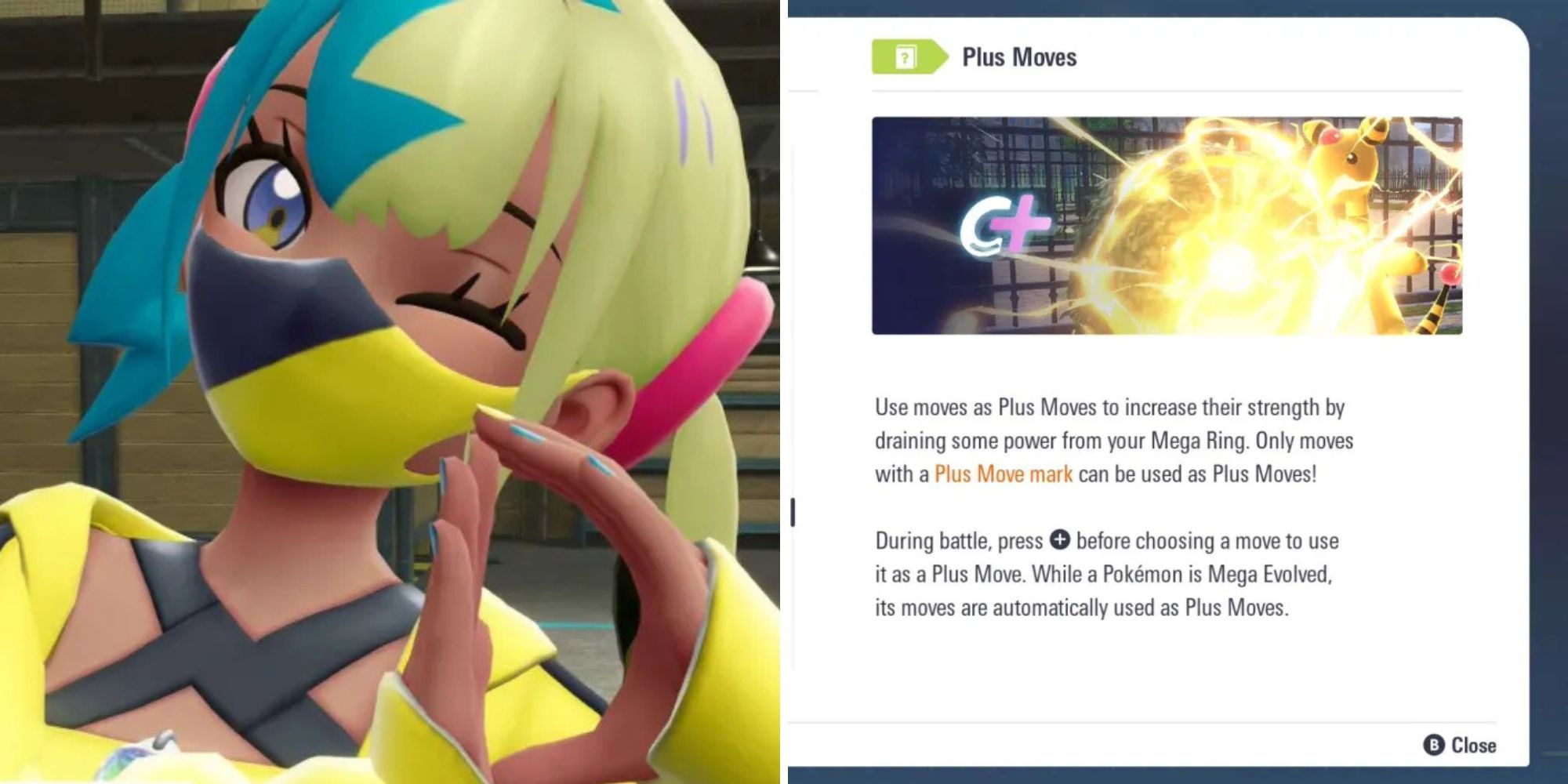 WWW.DUALSHOCKERS.COMHow To Use Plus Moves In Pokmon Legends: Z-ADo you want to gain an advantage against an opponent in Pokmon Legends: Z-A? Sure, you can increase your power through the use of the game's various Mega Stones, but you can also do so without Mega Evolution.0 Yorumlar 0 hisse senetleri 201 Views
WWW.DUALSHOCKERS.COMHow To Use Plus Moves In Pokmon Legends: Z-ADo you want to gain an advantage against an opponent in Pokmon Legends: Z-A? Sure, you can increase your power through the use of the game's various Mega Stones, but you can also do so without Mega Evolution.0 Yorumlar 0 hisse senetleri 201 Views -
 WWW.MASHED.COMMake Cheddar's Famous Honey Butter Croissants Right At HomeOur copycat Cheddar's honey butter croissants are beautiful flaky, melt-in-your-mouth pastries with the sweet, rich touch of a honey butter drizzle.0 Yorumlar 0 hisse senetleri 156 Views
WWW.MASHED.COMMake Cheddar's Famous Honey Butter Croissants Right At HomeOur copycat Cheddar's honey butter croissants are beautiful flaky, melt-in-your-mouth pastries with the sweet, rich touch of a honey butter drizzle.0 Yorumlar 0 hisse senetleri 156 Views -
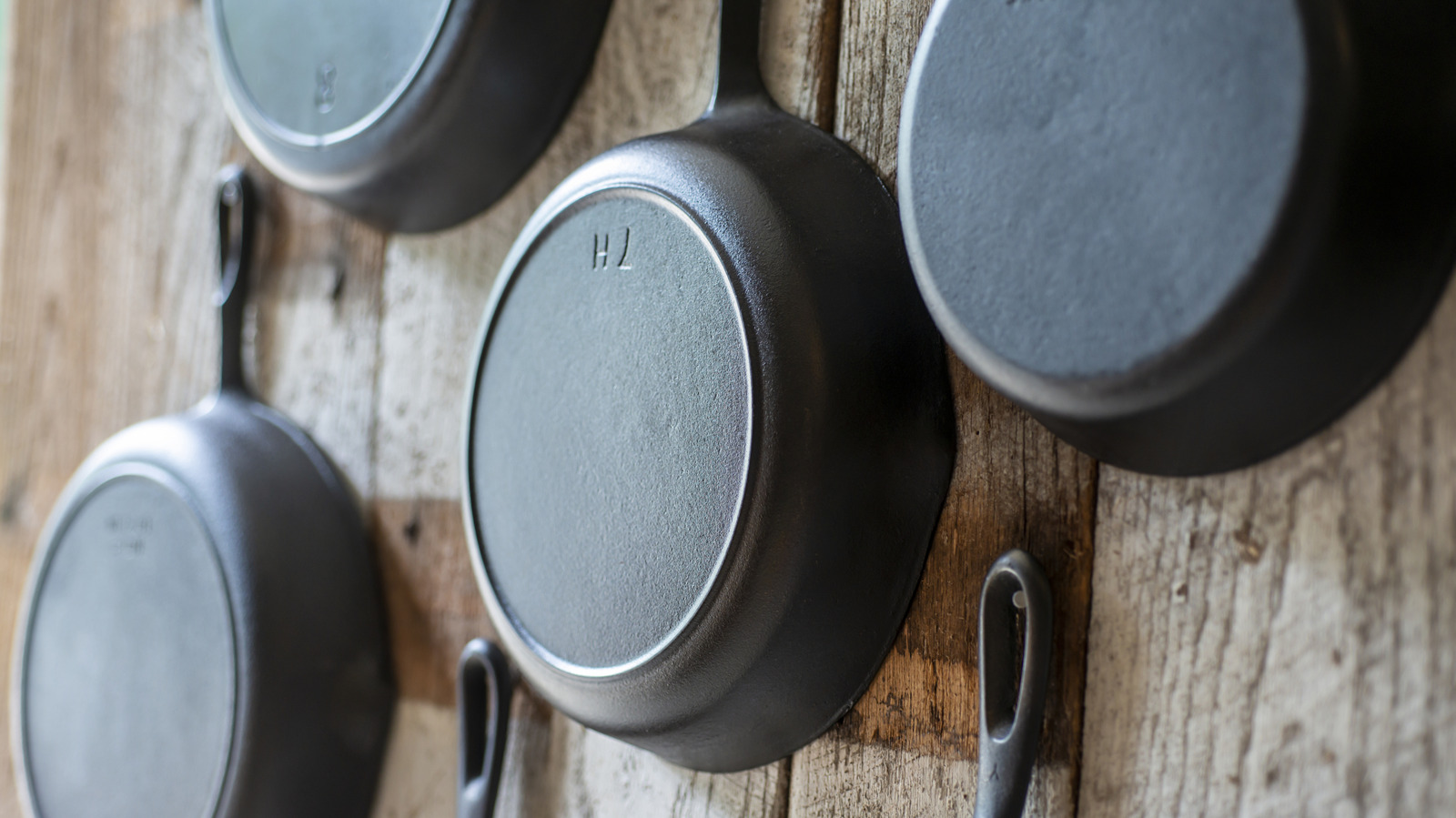 WWW.MASHED.COMCast Iron Vs Nonstick: Which Material Is Best For Skillets?We're digging deep to examine the properties of cast iron versus nonstick skillets so you can make an informed choice and avoid wasting your money.0 Yorumlar 0 hisse senetleri 154 Views
WWW.MASHED.COMCast Iron Vs Nonstick: Which Material Is Best For Skillets?We're digging deep to examine the properties of cast iron versus nonstick skillets so you can make an informed choice and avoid wasting your money.0 Yorumlar 0 hisse senetleri 154 Views -
WWW.THEKITCHN.COMMy Melt-in-Your-Mouth Tender Jamaican Stew Is the Most Comforting Recipe I KnowThe stew is rich and flavorful.READ MORE...0 Yorumlar 0 hisse senetleri 155 Views
-
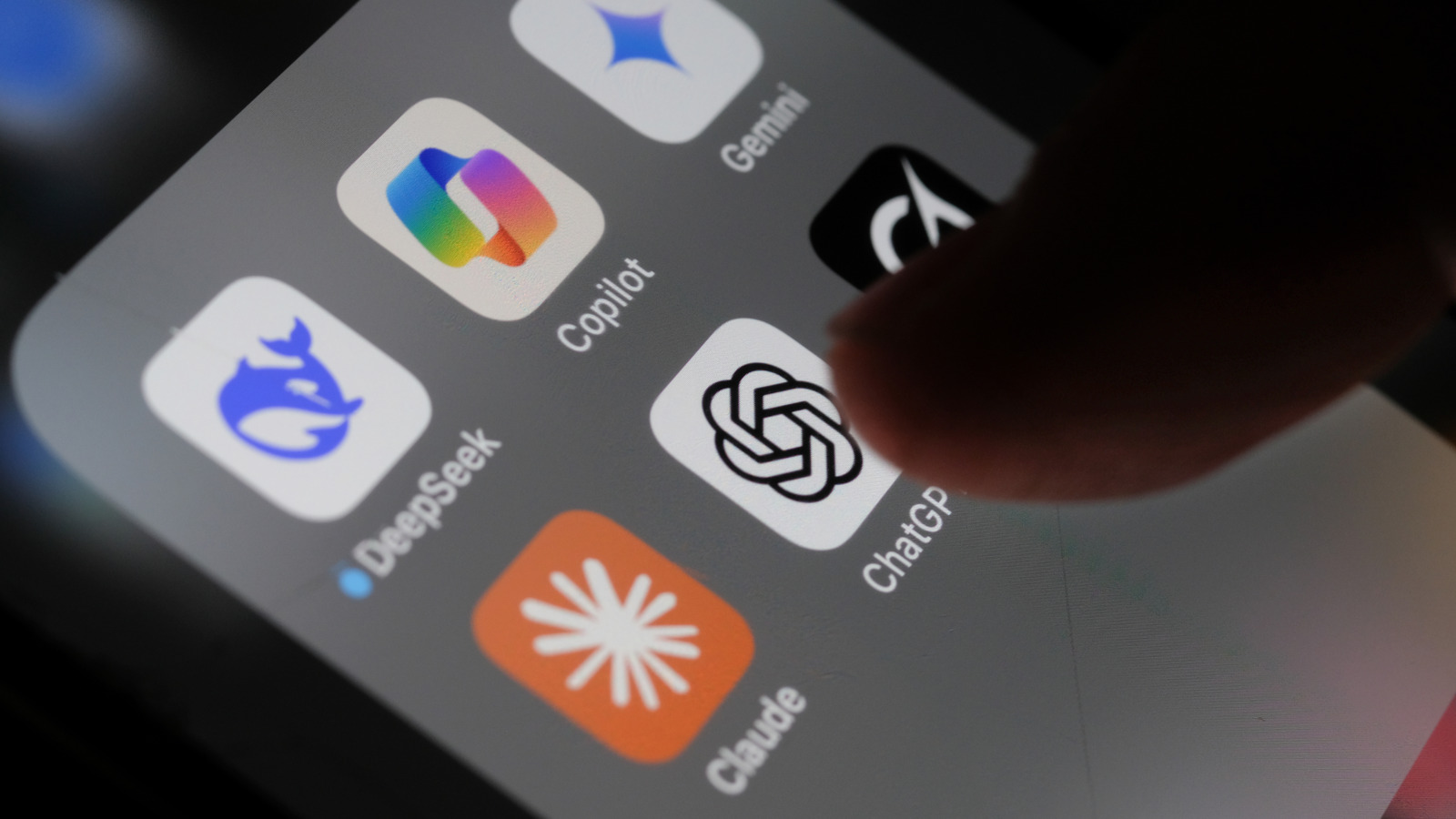 WWW.BGR.COM5 Expert Tips To Have ChatGPT Help Manage Your ScheduleWhile most people use ChatGPT for academics, coding, or writing help, it can even help you manage your schedule -- by planning your activities.0 Yorumlar 0 hisse senetleri 149 Views
WWW.BGR.COM5 Expert Tips To Have ChatGPT Help Manage Your ScheduleWhile most people use ChatGPT for academics, coding, or writing help, it can even help you manage your schedule -- by planning your activities.0 Yorumlar 0 hisse senetleri 149 Views -
 YUBNUB.NEWSD.C. Del. Norton, Reportedly In Early Stages Of Dementia, Scammed By Suspects Masquerading As Home Cleaning CrewLongtime Democratic District of Columbia Del. Eleanor Holmes Norton was scammed by individuals claiming to work for an HVAC company, according to a police report describing the 88-year-old lawmaker as0 Yorumlar 0 hisse senetleri 147 Views
YUBNUB.NEWSD.C. Del. Norton, Reportedly In Early Stages Of Dementia, Scammed By Suspects Masquerading As Home Cleaning CrewLongtime Democratic District of Columbia Del. Eleanor Holmes Norton was scammed by individuals claiming to work for an HVAC company, according to a police report describing the 88-year-old lawmaker as0 Yorumlar 0 hisse senetleri 147 Views



